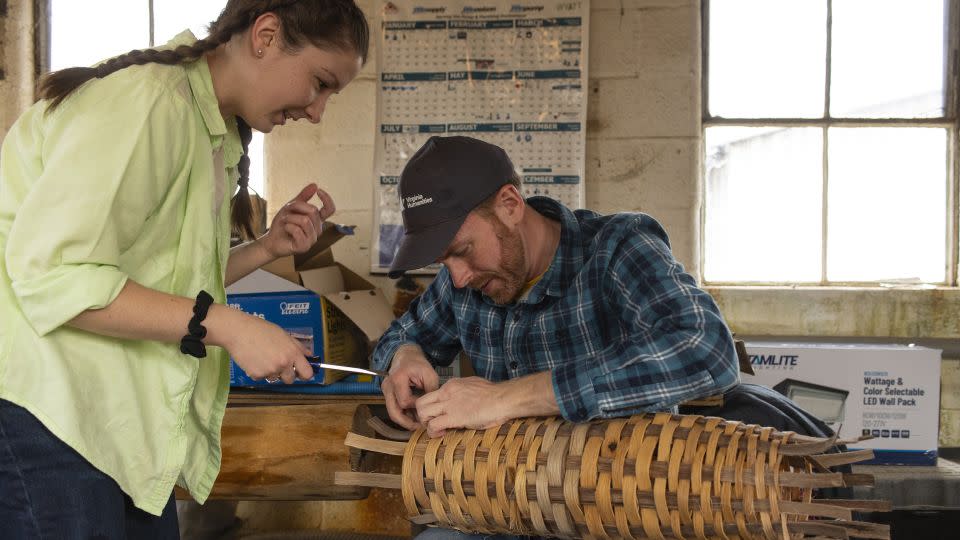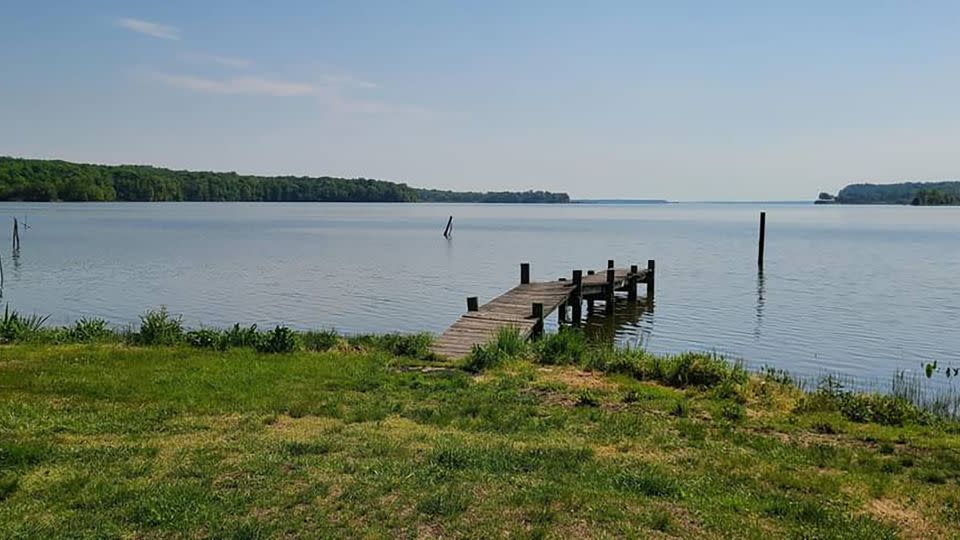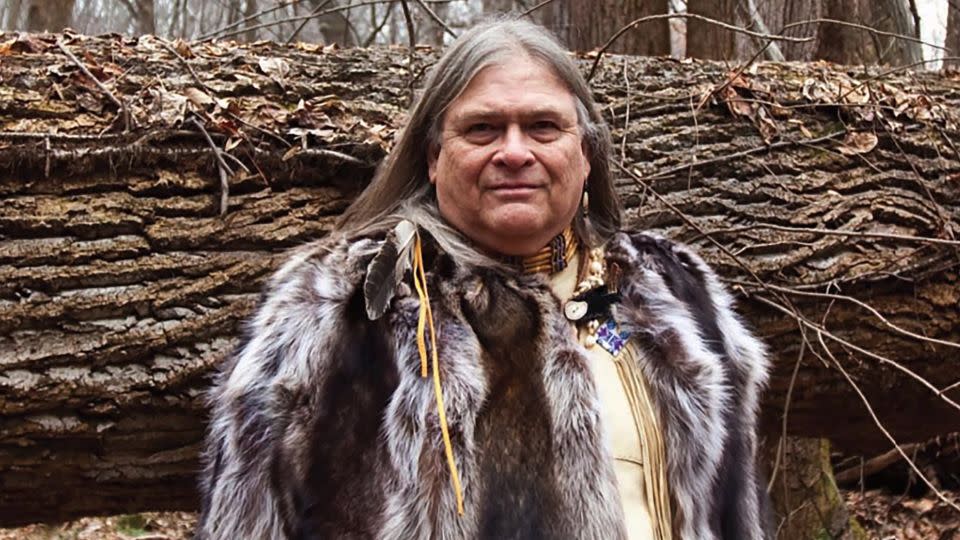A Virginia tribe says racism wiped their Native identity from historic records. Nearly a century later, they’re still fighting for recognition
Brad Hatch takes pride in his work as a Patawomeck Indian Tribe master eel pot maker. When Hatch works to weave split white oak into baskets used to capture the slippery creatures, he’s helping preserve a craft that has been passed down for generations.
The tribe, he told CNN, is the only one in Virginia that still makes eel pots.
“Eel pots represent the deep historical link that we have with the waterways of our homeland and with the land,” Hatch said. “It’s a representation of our community and culture and how we’ve been able to adapt and succeed and survive over time.”
The Patawomeck Indian Tribe has been fighting to gain federal recognition from the US government for more than a decade. Hatch said the designation is critical to preserving the tribe’s cultural traditions, like eel pot making.
While the tribe received recognition from the Commonwealth of Virginia in 2010, Hatch said federal recognition would give them authority over their ancestral land and access to additional resources offered by the government to federally recognized tribes.
But the tribe’s fight for recognition has been met with numerous challenges, including a nearly century-old racist state law that experts say all but erased many of Virginia’s Native Americans from historical records, and is now hampering current-day efforts to meet criteria for federal recognition.
Hatch, who is a member of Patawomeck Tribal Council, said the tribe has more than 2,500 enrolled members across Virginia’s Stafford and King George counties.
“Nobody ‘discovered’ us because we were here already,” Hatch said.
But now, their challenge is to prove that to the federal government.
The power of federal recognition
The Patawomeck tribe’s traditional homeland is located near the Potomac Creek in the eastern part of Virginia’s Stafford County, and western part of King George County. The tribe has occupied the land for more than 700 years, according to the Encyclopedia Virginia.
Hatch said his ancestors lived in palisaded villages and hamlets along the Potomac Creek and traded with Jamestown colonists and the English in the early 17th century.
Today, houses dot the landscape where two of their ancestral villages once stood, but Hatch said the majority of the tribe’s members still live along the Potomac Creek within 10 miles of the village sites.
Gaining federal recognition, Hatch said, would help the tribe preserve their ancestral language, Algonquin, and other traditions like quilting. The recognition would also provide vital access to funding that’s sorely needed in the community and full authority to give their ancestor’s remains the respect they deserve, he added.
“Federal recognition provides opportunities for grant funding for things like housing and education and health care – things that we don’t necessarily have the same access to and historically have not had the same access to, that can really help bolster our community,” he said.
The state of Virginia recognizes 11 tribes – including the Patawomeck – but only seven have also received federal recognition.

There have been multiple pathways to obtaining that recognition, including by congressional actions, presidential executive orders, federal court decisions and treaties, according to the Interior Department’s Bureau of Indian Affairs. Today, a tribe can be granted recognition through Congress or a decision by a US court, the department said. The Interior Department also has its own process for recognition.
Across the United States, there are 574 federally recognized American Indian and Alaska Native tribes and villages, according to the US Bureau of Indian Affairs.
Virginia Reps. Abigail Spanberger, Jennifer Wexton and Jennifer Kiggans introduced a bipartisan bill last September that would grant the Patawomeck tribe the federal designation through Congress.
Spanberger said in a statement at the time, “The federal government is long overdue to acknowledge what the Commonwealth of Virginia and the members of the Patawomeck Tribe themselves already know to be true.”
Proving ancestral heritage
The Bureau of Indian Affairs requires tribes to meet several criteria, including being “a distinct community and demonstrates that it existed as a community from 1900 until the present” in order to gain federal recognition.
Danielle Hiraldo, director of the American Indian Center at the University of North Carolina at Chapel Hill, said some tribes often find it challenging to prove their existence through historical records.
“You’re essentially saying we need an outside government to (validate) the proof that we are who we say we are,” Hiraldo said.
A spokesperson for the Interior Department told CNN its Office of Federal Acknowledgment works with groups to provide suggestions and advice on how to prepare a documented petition for federal recognition.
But, Hiraldo said, many tribes still face a steep documentation hurdle. Hatch said the Patawomeck tribe has had to rely on the help of archeologists and anthropologists to fill in historical gaps about their history.

Further complicating matters, many records about indigenous tribes, including the Patawomeck, were also damaged or destroyed during the Civil War. In Stafford County nearly two-thirds of court records were lost, according to the Stafford County Historical Society.
Even with archival and research support, Hiraldo said there’s another significant barrier that can prevent Virginia tribes from proving their historical existence – the commonwealth’s Racial Integrity Act of 1924.
The racist law prohibited interracial marriage and stated, the term “’white person’ shall apply only to the person who has no trace whatsoever of any blood other than Caucasian.”
The Act was championed and enforced by Walter Plecker, the Commonwealth’s registrar of vital statistics. In a 1924 health bulletin, Plecker wrote, “The term ‘Indian’ will no longer be accepted for that class but must be applied only to those of known pure Indian blood, or those mixed with white. If there is a mixture of negro they must not be classed as Indians but as ‘Negro’ or ‘Mixed Indian.’”
In 1967, the US Supreme Court’s decision in Loving v. Virginia ruled that the 14th amendment prohibited governments from enforcing laws banning interracial marriage. The ruling overturned Virginia’s Racial Integrity Act but Hiraldo said the four decades of damage caused by the law had lasting effects.
“We had states that were labeling tribal peoples as ‘mulatto,’ as being mixed, or just identifying them as being White or Black. And they’re just essentially making those identifications by the way that they appear,” Hiraldo, who is a member of North Carolina’s Lumbee Tribe, said.
“The Racial Integrity Act [of 1924] essentially said, ‘We no longer have Indians in the state of Virginia,’ even though they did. And they had a lot of evidence to support that, but they just unilaterally assumed that they were no longer important enough to be documented within their archives.”

Making their existence known
Despite the challenges the tribe continues to face in its quest for federal recognition, Hatch said its members are undeterred.
“There’s a lot of work that we have left to do … not only in terms of achieving federal recognition, but also in terms of just preparing ourselves and our administration within the tribe to deal with everything that comes with federal recognition,” Hatch said.
Last summer, the tribe opened the Patawomeck Museum and Cultural Center, which aims to educate the public about their culture and heritage.
The museum features a living history village along with gardens that sprawl across 17 acres. It also contains artifacts that are symbolic of their heritage, including tools and a turkey-feathered cloak that is a replica of one worn by Chief Powhatan and designed for the movie “The New World.” The tribe’s Chief Emeritus Robert Green was an extra in the movie and provided turkey feathers to make the cloak.
The tribe also provides tours to the public and holds language preservation classes.
“To have a place that we have some control over and a place where we can put a cultural center and museum … we’ve been very pleased with it so far,” Hatch said. “I think it’s a story that we’re putting out there that more people need to hear.”
But, he added, the “rupture in history” caused by racist laws that make it harder to get federal recognition is still “a major hurdle” that many Virginia tribes have faced.
For more CNN news and newsletters create an account at CNN.com

